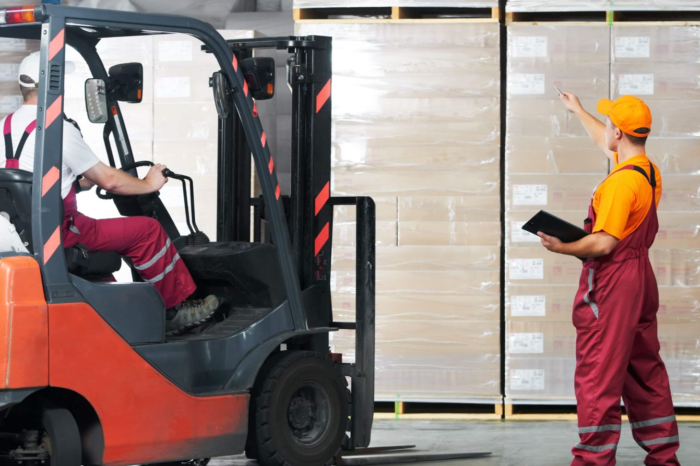Powered Mobile Equipment
Ensuring Workplace Safety: The Forklift Guide You Need
October 17, 2023 | Get Special Report!
Forklifts are essential tools in warehouses, but they can also be dangerous if not used properly. Forklift accidents are a leading cause of fatal and serious work injuries, and non-compliance with safety standards can lead to citations from organizations like OSHA and OHS.
Forklifts, despite being involved in only 1% of warehouse accidents, account for 10% of physical injuries in these workplaces. Forklifts were the source of 85 work-related deaths and 7,940 nonfatal injuries involving days away from work in 2018. This highlights the severity of forklift accidents and underscores the need for strict safety measures.
To learn more statistics regarding forklifts, follow this link.
How can you avoid injuries and citations with forklifts?
To help avoid injuries this 12-step compliance plan assists in ensuring the safe use of forklifts in warehouses.
Step 1: Ensure Forklifts Meet Design Standards – All forklifts must meet the design and construction requirements outlined in American National Standard for Powered Industrial Trucks and the Canadian Standard Association Safety Standard for Lift Trucks. Modifications affecting capacity or safe operation require manufacturer approval, and legible nameplates and markings are necessary.
Follow this link for a helpful checklist to ensure your compliance with forklift regulations and the safety of your workers.
Step 2: Ensure Forklifts Are Used in Designated Locations – Different forklift designations are based on power sources, and they must only be used in suitable locations. For example, diesel forklifts shouldn’t be used in areas with flammable gases.
Step 3: Ensure Forklifts Have Proper Safety Guards- Use load backrest extensions as needed to prevent loads from falling. Ensure that loads meet specified requirements, and do not stack them higher than the operator’s head.
Step 4: Ensure Safe Handling of Forklift Fuel – Properly handle and store liquid fuels such as gasoline and diesel according to national safety standards and adhere to guidelines for liquefied petroleum gas.
Step 5: Ensure Safe Methods for Changing and Storing Forklift Batteries – Follow rules for charging and storing forklift batteries, banning smoking in battery charging areas and keeping tools away from uncovered batteries.
For emergency procedures for lead-acid batteries click here!
Step 6: Ensure Well-Lit Forklift Operating Areas Properly – illuminate operating areas and provide auxiliary directional lighting when general lighting is insufficient.
Step 7: Keep Forklift Emissions Below Required Levels – Monitor and control concentrations of noxious gases and fumes generated by forklift operations to comply with federal, state, and jurisdictional regulations.
Step 8: Ensure Safety of Forklift Dock Boards – Ensure that dock boards are strong enough to handle the expected loads and are equipped with anti-slip features and handholds. Click here to read all 12 steps!
What are some of the trainings every employer should be enforcing within the workplace?
To maintain a secure working environment there are additional essential forklift safety procedures to prevent accidents.
- Avoid Standing Under Suspended Loads
- Control Speed: Drive at a speed no faster than walking comfortably, especially when the forklift is without a load, as they can be unstable.
- Keep the Load Low: Position the forks low and tilt the mast slightly back while moving to maintain stability.
- Maintain Visibility: If a load obstructs your forward vision, drive in reverse.
- Back Down Slopes: Descend slopes with an incline greater than 10 percent by moving backward. Ensure your backup alarm is functioning.
- No Hitchhikers: Never allow unauthorized passengers on the forklift.
- Prevent Tipping: Avoid driving with tall or top-heavy loads, make gradual turns, and ensure your load is secure. Back down ramps and avoid turning on slopes. Stay alert for uneven terrain, bumps, and chuckholes, and cross railroads diagonally.
If you would like to continue reading more safety procedures, follow this link.
In conclusion, forklifts are valuable tools in warehouses, but they can pose significant risks if not handled properly. By following this 12-step compliance plan and additional safety tips, employers and workers can ensure a safer working environment, reduce accidents, and avoid costly citations and injuries. Always treat forklifts with respect and prioritize safety in warehouse operations.


Great insights! Thanks for sharing.